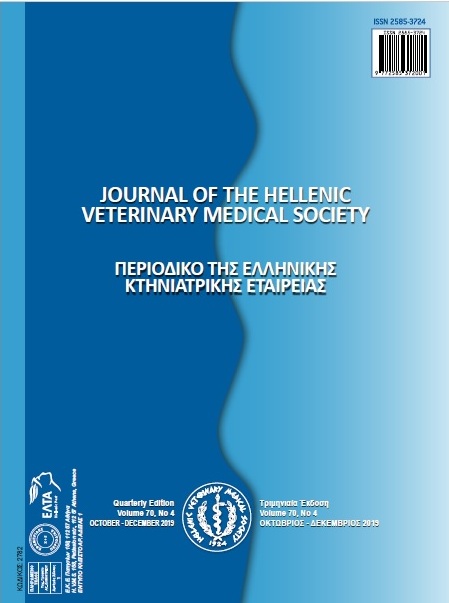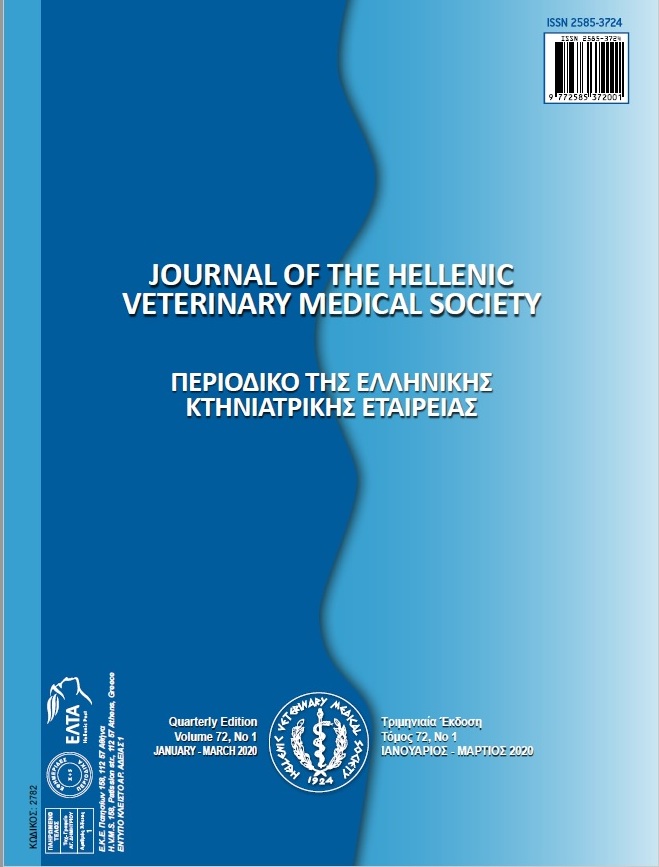Feline Epilepsy: An update

Abstract
Epileptic seizures are the most common neurological disorder in the clinical setting. Their etiology is multifactorial and is mainly divided into structural, reactive and idiopathic epilepsy. Structural epilepsy can be caused by vascular events, inflammatory conditions (encephalitis), traumatic injuries, neoplasia, congenital and inherited (degenerative) disorders. Reactive epilepsy is caused by exposure in toxins or metabolic derangements. Although idiopathic epilepsy was thought to be rare in cats, it is now established as a common cause. Epileptic seizures in cats appear with various clinical presentations including generalized, focal with or without secondary generalization epileptic seizures. Diagnostic investigation is crucial in order to establish final diagnosis and to determine the therapeutic plan. Diagnostics include physical and neurological examination with detailed history (drug or toxin exposure), routine hematology (CBC, biochemistry, urinalysis), specific laboratory tests if concurrent or metabolic disease are suspected, advanced diagnostic imaging (CT/MRI) whether intracranial disease is suspected and cerebrospinal fluid (CSF) analysis. Most commonly used antiepileptic drugs (AED) in cats are phenobarbital and levetiracetam. Bromide is contraindicated in cats due to severe respiratory disease caused as an adverse life-threatening reaction. Diazepam is an emergency AED used to eliminate cluster seizures or status epilepticus but it should be avoided as a long-term medication because it has been associated with fatal hepatotoxicity. Gabapentin in another potential antiepileptic drug however its longterm efficacy has to be evaluated. Prognosis depends on the underlying etiology and treatment response. In most cats quality of life is improved and (>50% reduction of epileptic seizures) regardless of etiology. The complete remission of epileptic seizures in cats is rare and most cats should be maintained on anti-epileptic therapy.
Article Details
- How to Cite
-
BAKA, R., & POLIZOPOULOU, Z. (2020). Feline Epilepsy: An update. Journal of the Hellenic Veterinary Medical Society, 70(4), 1749–1756. https://doi.org/10.12681/jhvms.22217
- Issue
- Vol. 70 No. 4 (2019)
- Section
- Review Articles

This work is licensed under a Creative Commons Attribution-NonCommercial 4.0 International License.
Authors who publish with this journal agree to the following terms:
· Authors retain copyright and grant the journal right of first publication with the work simultaneously licensed under a Creative Commons Attribution Non-Commercial License that allows others to share the work with an acknowledgement of the work's authorship and initial publication in this journal.
· Authors are able to enter into separate, additional contractual arrangements for the non-exclusive distribution of the journal's published version of the work (e.g. post it to an institutional repository or publish it in a book), with an acknowledgement of its initial publication in this journal.
· Authors are permitted and encouraged to post their work online (preferably in institutional repositories or on their website) prior to and during the submission process, as it can lead to productive exchanges, as well as earlier and greater citation of published work.





